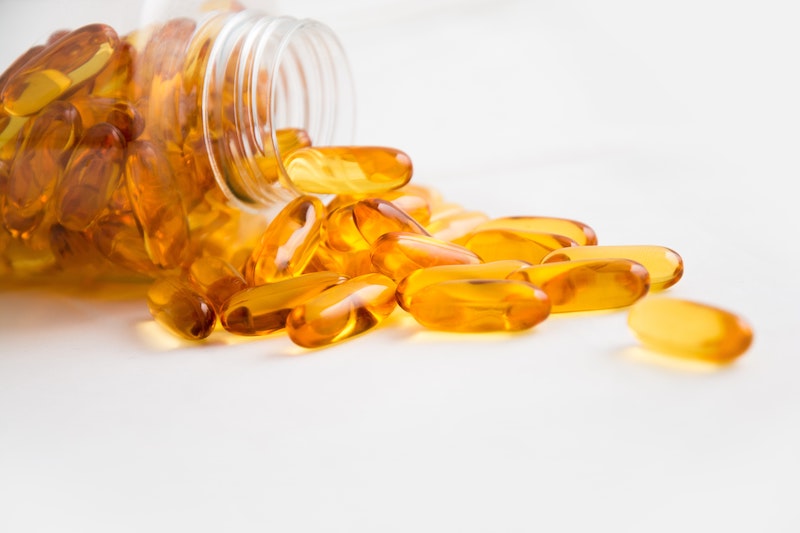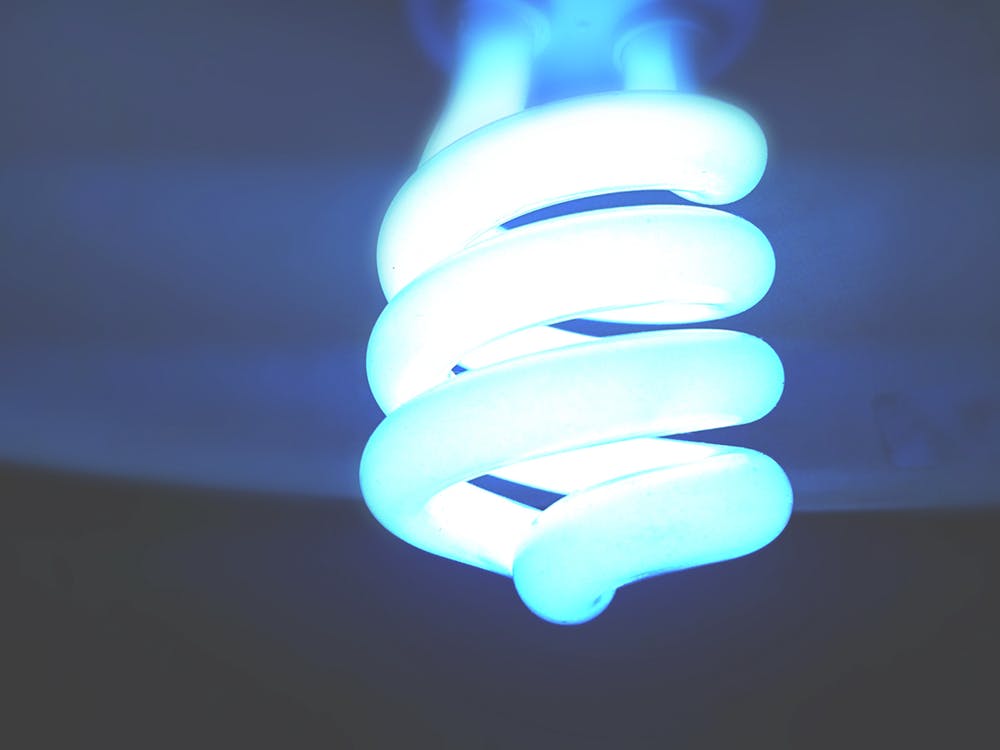Fibro Fix Blog — eye health

The “Eyes” Have It: Fish Oil for Eye Health 0
These days, you can’t pick up a health magazine or nutrition book and not find someone singing the praises of fish oil. From supporting cardiovascular health and a normal inflammatory response, to supporting healthy brain function and keeping the skin supple and hydrated, there’s certainly no shortage of feathers in fish oil’s cap. Eating oily fish as a whole food is a great option, since it comes with complete protein and other helpful nutrients, but many of the benefits that come from eating fish are primarily due to the omega-3 fatty acids found in the fat – specifically, eicosapentaenoic acid and docosahexaenoic acid, EPA and DHA for short.
Fish oil is well known for helping conditions associated with the body’s natural inflammatory process. (Think of good quality fats as oil being added to rusty machine parts to help them work more smoothly.) One of the lesser-known properties of fish oil is that it may be good for eye health. Occasional inflammation in the eyes may interfere with the production of tears and other eye lubricants, both in quantity and chemical composition. Tears aren’t just water and salt; they contain an oily layer, which prevents them from evaporating too quickly and leaving someone with excessively dry eyes.
Dry eye syndrome, or “dry eyes,” has been the unfortunate victim of somewhat comical ads for prescription and over-the-counter eye drops and artificial tear products. To people living with the condition, however, it’s no laughing matter. It can cause mild to moderate discomfort, and more severe cases may interfere with work and reduce overall quality of life. Studies support a role for EPA and DHA in aiding this condition.
The incidence of dry eyes is lower in populations consuming large amounts of omega-3 fats, and is higher in populations with a high omega-6 to omega-3 ratio. In one trial that investigated the effects of fish oil supplementation in individuals with dry eyes, compared to placebo, subjects taking fish oil (1245mg EPA and 540mg DHA per day) for 12 weeks experienced small but notable improvements in subjective eye pain and dry sensation. Aside from dietary supplementation, topical application of omega-3 fatty acids via eye drops may be another way to introduce these helpful compounds into the eyes. Experiments employing mouse models of dry eye indicate that eye drops containing a mixture of omega-3s and hyaluronic acid improved corneal function and decreased inflammation and oxidative stress markers on the surface of the eyes.
Another eye health concern for which fatty fish consumption or fish oil supplementation may be beneficial is age-related macular degeneration (AMD). Compared to healthy controls without AMD, AMD patients consume significantly lower amounts of oily fish. Amounts of EPA and DHA measured in blood and the cell membranes of red blood cells (a good way to assess body levels of these fats) showed that higher amounts of these fats in the blood and cell membranes were associated with significantly lower risk for AMD, independent of potentially confounding factors, such as high triglycerides, hypertension, and family history of AMD.
Okay, sounds great! But what if you don’t like fish? Are you doomed to the adult equivalent of when you were forced to choke down soggy, overcooked Brussels sprouts at the dinner table as a kid? Do you have to eat fish to get these benefits? No: fish oil capsules to the rescue! But what about those “fishy burps” that scare people away from taking fish oil supplements? Fortunately, many high-quality fish oils are now available that are designed to reduce the risk of the fishy flavor “repeating” on you.
For vegetarians and vegans, who may find it difficult to get adequate EPA and DHA from the selection of foods available to them, the omega-3 fat, alpha-linolenic acid (ALA, found in flax, chia, and walnuts) has also been shown to be beneficial in animal models of dry eye. However, because many people do not efficiently convert ALA into the more potent EPA and DHA, it may be best to prefer eating fish or taking fish oil, but if those are not options, plant-based omega-3s are still a good choice.
Sources
- Liu A, Ji J. Omega-3 Essential Fatty Acids Therapy for Dry Eye Syndrome: A Meta-Analysis of Randomized Controlled Studies. Medical Science Monitor: International Medical Journal of Experimental and Clinical Research. 2014;20:1583-1589.
- Miljanović B, Trivedi KA, Reza Dana M, Gilbard JP, Buring JE, Schaumberg DA. The relationship between dietary n-3 and n-6 fatty acids and clinically diagnosed dry eye syndrome in women. The American journal of clinical nutrition. 2005;82(4):887-893.
- Kawakita T, Kawabata F, Tsuji T, et al. Effects of dietary supplementation with fish oil on dry eye syndrome subjects: randomized controlled trial. Biomed Res. 2013;34(5):215-20.
- Merle BM, Benlian P, Puche N, et al. Circulating omega-3 Fatty acids and neovascular age-related macular degeneration. Invest Ophthalmol Vis Sci. 2014 Mar 28;55(3):2010-9.
- David Brady
- Tags: cardiovascular dry eyes eye health fish oil inflammation omega-3 fatty acids

Astaxanthin -- The Eyes Have It 0
The average youth spends approximately 7.5 hours each day using entertainment media, but even that seems conservative if you calculate the amount of time youths and adults spend staring at smartphones each day. In addition to the various psychological and social consequences of unbalanced screen time, the electromagnetic radiation from screens has been shown to damage both the cornea and retina of the eye.- David Brady
- Tags: astaxanthin back to school eye health eyes functional nutrition nutrition screen time social media

LED Light Risks 3
Incandescent lighting has served to illuminate the spaces of mankind since Thomas Edison first patented the lightbulb in the late 19th century. After nearly 130 years of service, this faithful lighting technology has suddenly been forced into retirement to make way for the newer, energy-efficient light-emitting diodes (LED) lights. Other forms of lighting have been introduced, including fluorescent and halogen, but none has had the authority to erase incandescent as LED has done.
While this new lighting technology brightly illuminates our homes with their alien-like glow, the energy industry is celebrating a victory. LEDs use 75% less energy than incandescent lighting and could have the greatest potential impact on energy savings in the United States. LED lights are manufactured to eliminate virtually all heat-producing infrared light. Instead, they function on an excess of cool blue light which has been coupled with a yellow phosphor to create the white LED light that falsely emulates natural outdoor light. The lack of heat explains their energy savings since 90% of the energy utilization of incandescent lighting is due to heat production from infrared light.
The energy efficiency of LED lighting cannot be disputed, but perhaps, a more serious outcome of this new technology is being overlooked and would give adequate grounds for debate. Namely, the health impact of LED lighting on humans and sleep disturbances, particularly.
In the past, human exposure to blue light has been limited to the light radiating from the screens of electronic devices, but the use of LED bulbs for domestic lightening has suddenly plunged us into a pool of blue light from the moment we awake to the time we retire.
Many studies have warned against the long-term use of blue light because of its ability to damage cells of the retina (rods and cones) and negatively impact our circadian rhythm. Intense light significantly increases the temperature of the retina and generates a significant amount of free radicals which damage retinal cells. The injuries are cumulative, leading to death of retinal cells and inflammation in the eyes.
The cells of the retina communicate with various organ systems of the body to inform them of the presence and intensity of light. The body can then make decisions regarding which hormones it should produce to either keep us awake and alert, or relaxed for sleep. As the cells of the retina are slowly damaged by LED lighting, our body’s ability to maintain a healthy sleep/wake cycle becomes compromised.
Melatonin is a hormone the body produces to prepare us to sleep. As the cells of our retina communicate light intensity, the body can decide when it is time to start producing melatonin. Blue light tells the body to stay awake and alert, and suppresses the production of melatonin. As we begin to turn on the LED lights in our homes at night, our body is confused as blue light pours into our eyes. Melatonin is suppressed and our circadian rhythm is disrupted. As a result, we have trouble sleeping. One study found a significant, dose-dependent suppression of melatonin with exposure to LED lighting.
The duration of exposure to blue light creates cumulative damage, which is why domestic LED lighting has posed more health risks than intermittent exposure to electronic devices. Disruptions in the circadian rhythm are associated with increased incidence of diabetes, obesity, heart disease, cognitive and affective impairment, premature aging, some types of cancer, and many chronic pain and fatigue syndromes which could lead to significant concerns related to the constant use of domestic LEDs. During the day, exposure to blue light stimulates alertness, but problems brew when blue light becomes the primary source of illumination at night.
LED lights not only pose problems to our circadian rhythm through exposure to blue light, but also through the magnetic fields that radiate from them. Electromagnetic fields (EMF) are invisible energy or electrical fields that span our entire environment and interact with the energy fields present in our bodies and in physical objects around us. Parents, doctors, and general consumers have been increasingly concerned about the possibility of long term health effects from exposure to EMF radiation. The strongest sources of EMF radiation include our electronic devices such as cell phones, computers, tablets, plasma televisions, routers and modems, utility “smart” meters, and remotes.
Melatonin secretion from the pineal gland is very sensitive to the influences from electric, magnetic and electromagnetic field. A study of 50 electronic equipment service technicians, exposed to various levels of EMF radiation, found significantly decreased levels of melatonin. Although LED lighting does not pose the same threat or possess the same degree of EMF radiation as electronic devices, the influence of EMF radiation, coupled with LED lightening can create a disaster for the circadian rhythm and quality of sleep. Using electronic devices such as a cell phone or tablet at night is particularly concerning since they shine blue light and radiate EMF waves.
The importance of quality and predictable rest and sleep can’t be overstated, especially for those with chronic pain and fatigue syndromes. Our circadian rhythm is set by the natural light-dark cycles and when the blue light and EMF radiation of LED lighting threatens that natural cycle, our health becomes compromised. Many modern-day diseases, including fibromyalgia, have been associated with sleep disturbances.
Sadly, the incandescent light bulbs are quickly being depleted from the market, leaving conscious consumers with very few options for safe lighting. Halogen lighting, a close relative of incandescent, may be the only option for light bulbs. If we understand the risks of LED lights we can be more aware of how often we use them.
Resources:
- US Department of Energy. LED Lighting. Retrieved July 24, 2017, from https://energy.gov/energysaver/led-lighting
- Tosini, G., Ferguson, I., & Tsubota, K. (2016). Effects of blue light on the circadian system and eye physiology. Molecular Vision, 22, 61–72.
- Shang, et al. (2017). Light-emitting-diode induced retinal damage and its wavelength dependency in vivo. International Journal of Ophthalmology, 10(2), 191–202. http://doi.org/10.18240/ijo.2017.02.03
- Walsh, C., Prendergast, R., Sheridan, J., & Murphy, B. (2013). Blue light from light-emitting diodes directed at a single eye elicits a dose-dependent suppression of melatonin in horses. The Veterinary Journal, 196(2), 231-235. doi:10.1016/j.tvjl.2012.09.003
- Bonmati-Carrion, et al. (2014). Protecting the Melatonin Rhythm through Circadian Healthy Light Exposure. International Journal of Molecular Sciences, 15(12), 23448–23500. http://doi.org/10.3390/ijms151223448
- Lewczuk, B., Redlarski, G., Żak, A., Ziółkowska, N., Przybylska-Gornowicz, B., & Krawczuk, M. (2014). Influence of Electric, Magnetic, and Electromagnetic Fields on the Circadian System: Current Stage of Knowledge. BioMed Research International, 2014, 169459. http://doi.org/10.1155/2014/169459
- David Brady
- Tags: energy eye care eye health eyes functional medicine health led led light LED lighting light retina wellness and prevention

ZUCCHINI – YOUR NEW BEST FRIEND? 0
If you live in a farming community or have friends and neighbors who garden, you’ve probably been the lucky recipient of their surplus zucchini. The summer sun seems to make zucchini multiply inexplicably and prolifically, such that growers will look to foist their harvest on anyone and everyone they can.
But rather than bemoan the endless supply of this underrated vegetable, consider it a boon for a healthy diet. If you’re watching your carbohydrate intake, but find yourself missing your favorite pasta and noodle dishes, zucchini is your new best friend. If you can get your hands on a spiral slicing gadget—or can spare the time to cut long, thin strips by hand—the abundant supply of zucchini summer brings can be transformed into “zoodles,” which you can use to recreate spaghetti and meatballs, pad thai, and other dishes you might be craving, with the benefit of keeping things low-carb, gluten-free, or Paleo-compliant.
Zucchini belongs to the botanical family Cucurbitaceae, which includes many familiar summer and winter squashes and gourds, such as yellow, crookneck, delicata and acorn squash, pumpkins, watermelon, cucumbers and ornamental gourds.
Zucchini is a great addition to both omnivorous and vegetarian diets. It’s a good source of vitamins C and B6, riboflavin, vitamin A precursors, potassium, and manganese. It’s high in the carotenoid lutein, which is beneficial for eye health. Since lutein is a fat-soluble compound, and the body absorbs it better with a little bit of fat, it’s not a bad idea to add a pat of rich, yellow summer butter to steamed zucchini, or toss a pile of zucchini noodles with olive oil and garlic. Great side dishes for an outdoor dinner in the warm weather!
Zucchini is very low in carbohydrate, with a glycemic index that is practically negligible. It’s a good choice for filling a plate without racking up high calorie levels, although excess consumption can potentially lead to unpleasant gastrointestinal side effects. Part of this is due to the fiber content of this non-starchy vegetable, but another reason is that during storage and shipping, the carbohydrate content of zucchini changes a bit. One of the compounds that increases upon storage is raffinose. Raffinose belongs to the FODMAP category—fermentable, oligo-, di- and mono-saccharides and polyols. It’s an oligosaccharide that the human body lacks the enzyme to break down, so consumption of high amounts can result in gas and bloating.
With the growing popularity of “nose-to-tail” cooking for making use of all parts of animal foods, we shouldn’t forget that the same philosophy can be applied to vegetables. The yellow zucchini flowers that accompany each squash make a wonderful appetizer or side dish. A classic way to prepare these flowers is to stuff them with ricotta or goat cheese and fry them. Making zucchini bread or muffins is a good way to sneak these vegetables into unsuspecting children, and for those watching their starch intake, zucchini can be stuffed with an endless variety of toppings, including tomato sauce, olives, and fresh cheese, lending a pizza flavor, minus the dense bread base. Another way to make use of the avalanche of zucchini in summer is by preserving it, such as in relish, or simply blanching it and freezing it for winter. Dehydrating is another option, with crispy zucchini chips making a great, healthy snack for kids and adults alike.
Sources
- Sommerburg O, Keunen J, Bird A, van Kuijk FJGM. Fruits and vegetables that are sources for lutein and zeaxanthin: the macular pigment in human eyes. The British Journal of Ophthalmology. 1998;82(8):907-910.
- Mildred E. Mathias Botanical Garden. UCLA. Economic Botany. Cucurbitaceae.
